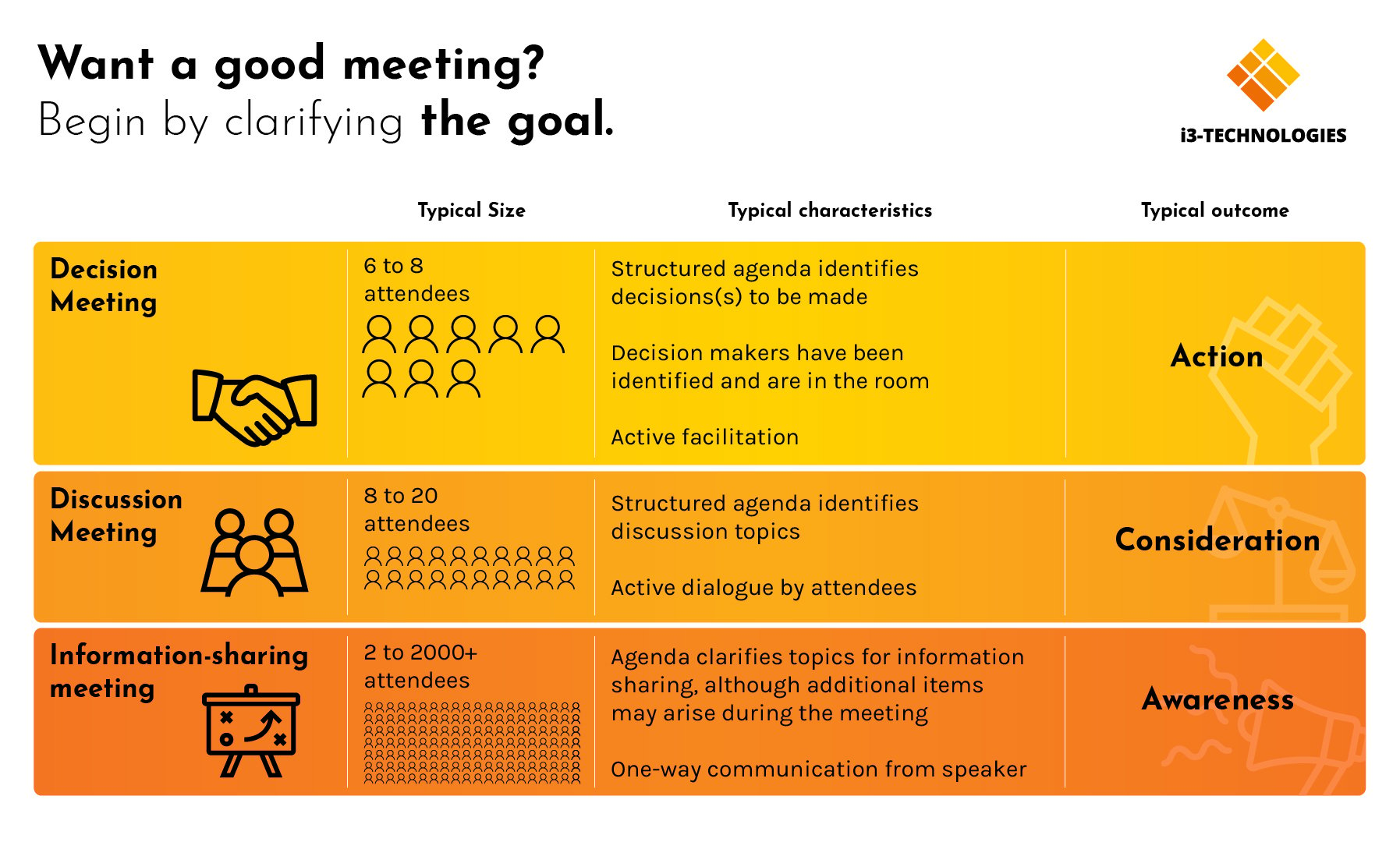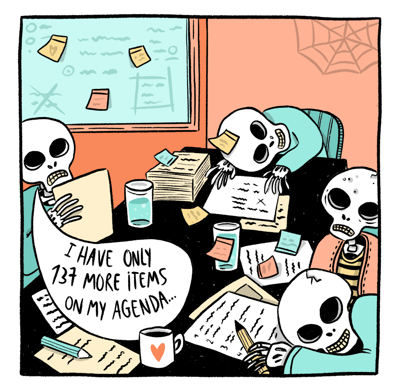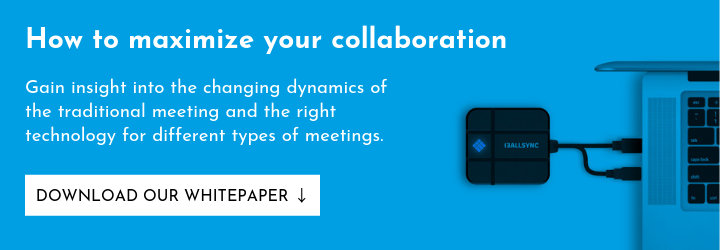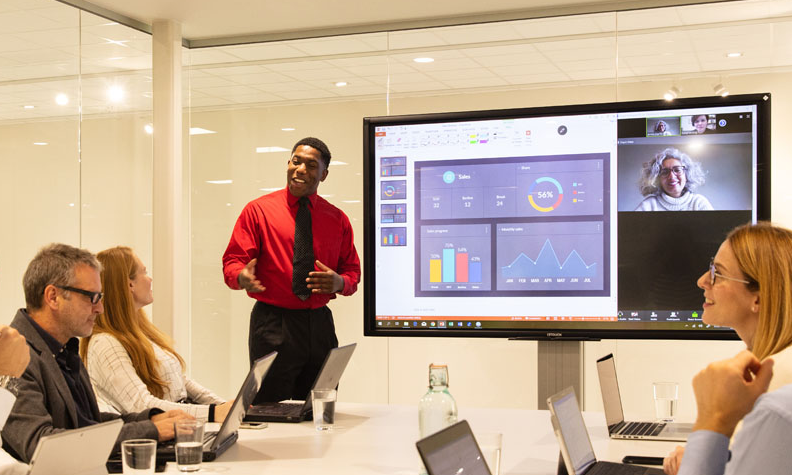How To Make Meetings More Effective
6 min read - Written by Muriel De Bruyne on Jul 8, 2019 10:00:00 AM Theme Productivity
We want to think that meetings help us solve our biggest problems - but how often have you been caught in a meeting that doesn’t know when to end?
There might have been issues as to what exactly you are discussing, or the potential solutions have been discussed to the point where people are more bogged down than inspired to find a solution.
One of the problems with meetings today is that they are often not productive at all. More and more entrepreneurs, managers, and employees in general view meetings as a waste of both time and money.
61% of executives recently stated that at least half the time that they spent making decisions was ineffective, and there is no doubt that the inefficiency of meetings plays a role in that statistic.
Here are a few things to think about before your next meeting to make sure that it’s an effective one.

Make sure the meeting is necessary
Human beings are creatures of habit, and it can be easy to fall into a routine that might not necessarily serve our best interests. For example, a recurring meeting is put on the agenda and stays there forever.
Make sure to evaluate if the meeting is still necessary after every single occurrence. The easiest way to do this is to take the time spent on the meeting, multiply it by the number of people involved and see if the total time spent on getting together weighs up to specific outcomes and action points of that specific meeting.
Don’t be afraid to cancel a recurring meeting when you really feel that it’s not adding any value to anybody’s work or if this week’s occurrence isn’t really necessary.
It’s also important to remember that having a discussion is very different from making decisions, and that is the latter that is key to overall progress.
Define the purpose of the meeting
There are all sorts of different types of meetings, for various purposes.
There might be a general meeting to discuss a new direction that a company is pivoting towards. There might also be a specific meeting discussing an isolated incident that has to be addressed. There might also be a “general discussion” meeting, where feedback is encouraged.
Your team members may have a problem distinguishing between the different types of meetings, especially when a meeting member might derail a specific discussion or conversation, and lines get crossed about what exactly is being spoken about.
There is a massive advantage in employees understanding beforehand whether they are meant to share, discuss, or decide on specific issues.
The graphic below makes a clear distinction between different types of meetings and their purposes:

Make sure everybody understands their role
It’s difficult to understand how a meeting can truly be productive if the members involved don’t fully understand what role they should be playing. Who is responsible for making the big decisions? Who is at the meeting to recommend or attempt to persuade the decision-makers to go into another direction? These distinctions must be made.
This can be done efficiently using the DARE model, which stands for decision-makers (D), advisers (A), recommenders (R), and execution partners (E).
For example, the decision-makers have the authority and responsibility to make decisions that decide on the future of the organization and must come to a consensus among themselves.
The advisers should explain how one choice might shape another aspect of the organization. For example, an adviser might point out how one decision shapes the profit/loss of the organization. While their voice is heard, they do not have any actual authority when it comes to voting on a decision.
A recommender doesn’t have a vote, but might go more in-depth as to the day-to-day consequences of a specific decision. They might provide analysis, explore alternatives, or provide other valuable information concerning a certain decision. While recommenders are extremely valuable, it’s important to remember that too many recommenders in a particular meeting can derail it and render it ineffective.
The execution makers are the ones who execute the actual decision, and who need information on how the decision is to be made. They might ask questions about practical implementation or require clarity before the decision is actually made so that it can be done logistically.
Discuss important topics first
Another aspect of a meeting that can’t be emphasized enough is the fact that the most important topics have to be discussed as soon as possible. This is why the first part of your meeting should be dedicated to the most important issues and situations.
It allows your organization to be more agile and adaptable by solving the most important problems first, and allowing employees to address the situation in terms of priority. This focus helps to ground the entire meeting, and help all attending understand which issues need to be addressed as soon as possible.
Make sure to keep on track (and in time)
Before your next meeting, list down all your meeting agenda items and give each item a time-slot. This way it’s easier to map out the time you need for your meeting in order to go through all your objectives.
It might also be a good idea ask for someone to keep track of time. If the meeting is scheduled for one hour, the timer can alert when there are only 5 or 10 minutes to go. If there are still some issues that need to be tackled, you should schedule a new meeting instead of running overtime, so that employees can also meet their other obligations.

Start standing during your meeting
Recent studies show that standing meetings are usually shorter and more to the point, and that longer sit-down meetings don’t always lead to better quality discussions.
On top of that, they also encourage much more active participation and idea sharing as well as increased alertness.
Whilst standing, people feel a shared purpose to get things done and won’t be distracted as much as opposed to sitting in meetings. So next time you’re organizing a meeting, try to get everyone on their feet!
Summarize the meeting
It’s also important to summarize the meeting after it’s over, as it can be easy to forget earlier portions of the meeting. The summary should contain a record of what is accomplished and who is responsible for what, including a list of actions that individuals have agreed to perform, and it should be forwarded to all participants and stakeholders within 24 hours after the meeting.
The bottom line is that meetings can be tough, stressful, and frustrating – but they don’t have to be ineffective anymore. At i3-Technologies, we are proud to offer easy to use, interactive tools to help ensure that your meeting is successful, no matter what the goals or objectives.
If you need more advice about what technological tools might be best for your company or organization, contact us today or download our latest e-book to see what may be the best fit for your workplace.



